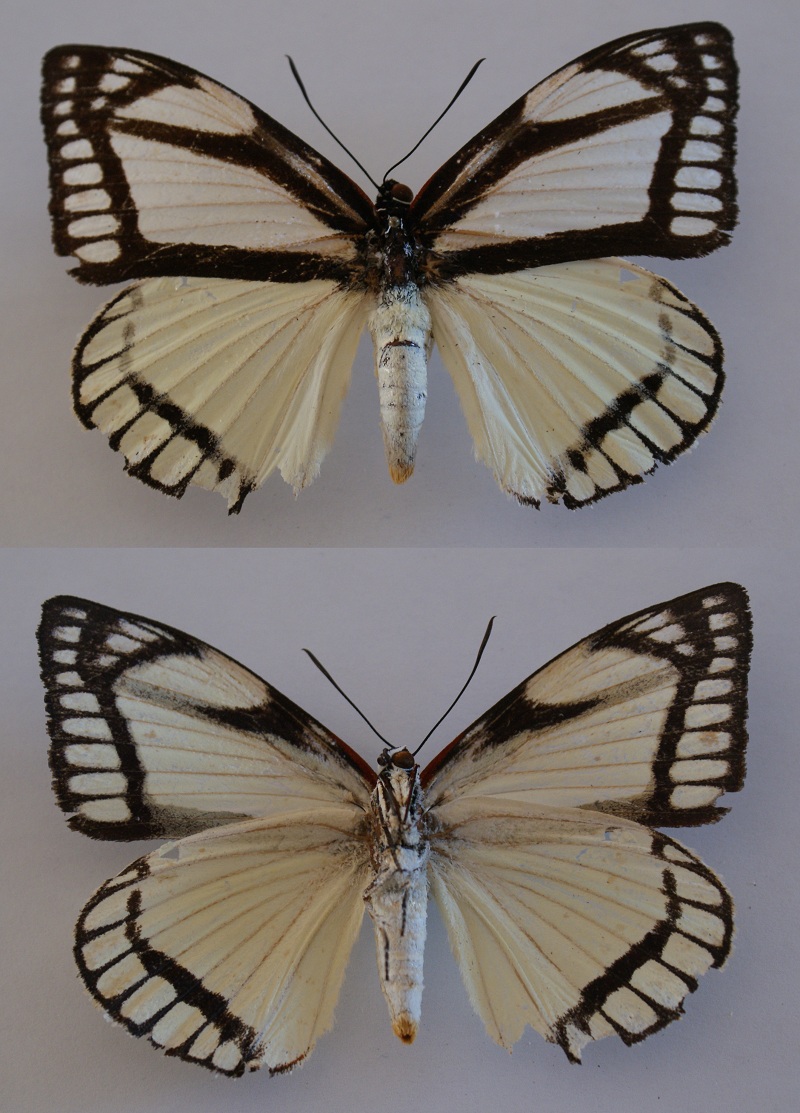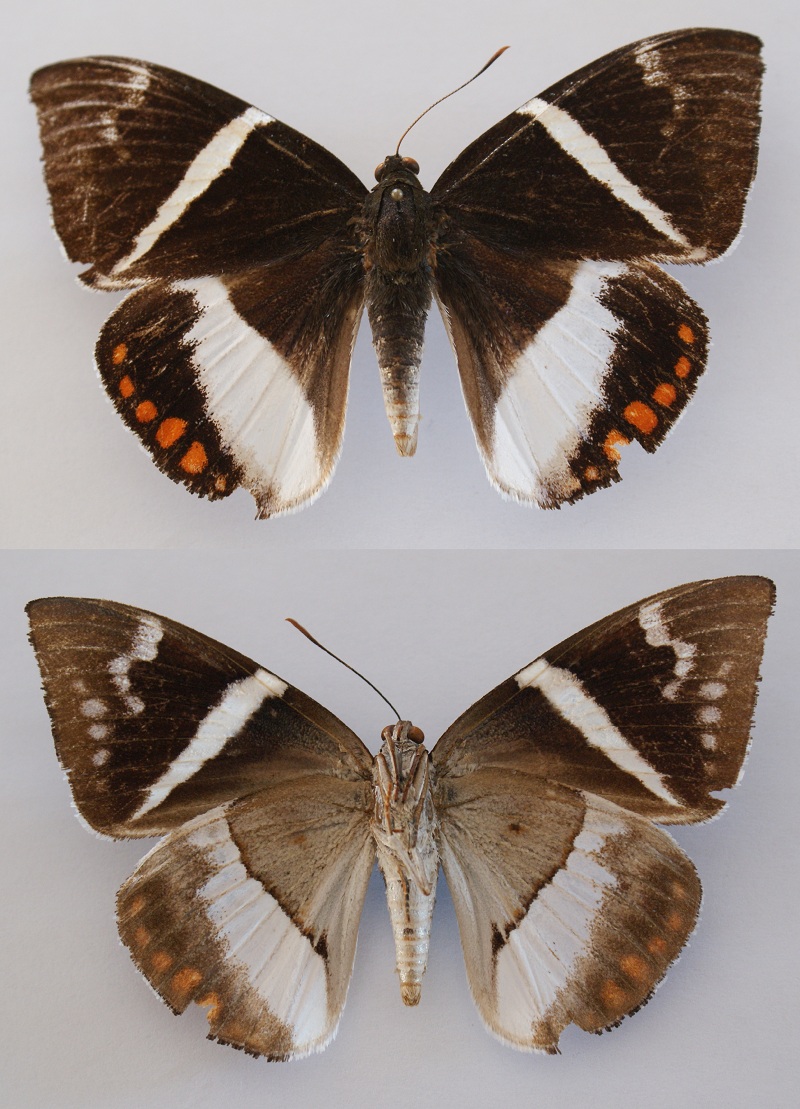|
|
Post by wolf on Nov 22, 2020 5:23:29 GMT -8
Alittle off topic, but why do some people put the name labels beneath the columns of specimens as displayed in Bob's box? I find it somehow confusing as my logic dictates that the namelabels presents the species that are "next in line" sort to say. At first glance i thought he'd forgot to put a name label of the species in the first column. Just curious!  |
|
|
|
|
|
Post by yorky on Nov 22, 2020 5:44:12 GMT -8
I want castnia estherae next but keep getting outbid
|
|
|
|
Post by Paul K on Nov 22, 2020 7:20:50 GMT -8
Alittle off topic, but why do some people put the name labels beneath the columns of specimens as displayed in Bob's box? I find it somehow confusing as my logic dictates that the namelabels presents the species that are "next in line" sort to say. At first glance i thought he'd forgot to put a name label of the species in the first column. Just curious!  I’m actually doing the same. I learned from Adam to organize drawer from bottom to the top so when slide out the drawer from cabinet I may see the specimens without taking out a drawer. The species label goes under the specimen(s) and the best quality or interesting specimen goes on the bottom following by less perfect to the top. |
|
|
|
Post by bobw on Nov 22, 2020 7:49:17 GMT -8
Alittle off topic, but why do some people put the name labels beneath the columns of specimens as displayed in Bob's box? I find it somehow confusing as my logic dictates that the namelabels presents the species that are "next in line" sort to say. At first glance i thought he'd forgot to put a name label of the species in the first column. Just curious!  I don't know, it's always just seemed the logical way to me. |
|
|
|
Post by bobw on Nov 22, 2020 7:58:29 GMT -8
I want castnia estherae next but keep getting outbid (note the new genus) was only known from the type series until four years ago. Some Mexican collectors then discovered where it flies and the first few went for staggering sums. There seem to be a lot on the market now and the price has plummeted. They're not so easy to collect because they fly in April and May whereas all other Mexican Castniidae fly from June and July, and the areas where they fly are controlled by drugs gangs. The males are very unusual in that they have very hairy wings! |
|
|
|
Post by trehopr1 on Nov 22, 2020 12:06:20 GMT -8
Bobw, which area/region offers the most species?
Mexico, Central America, or South America ?
Can you give us approximate species numbers for each respective region ?
Have never read or heard very much about Castniidae in general; and specimen offerings here in America
have always been on the thin side. I think most material goes over to Europe it seems like...
|
|
|
|
|
|
Post by bobw on Nov 23, 2020 1:49:55 GMT -8
Bobw, which area/region offers the most species? Mexico, Central America, or South America ? Can you give us approximate species numbers for each respective region ? Have never read or heard very much about Castniidae in general; and specimen offerings here in America have always been on the thin side. I think most material goes over to Europe it seems like... There are just over 90 species of Neotropical Castniidae in all, I've not studied the far-eastern and Australian groups so I can't comment on them. 22 of these are found in Central America and 13 of these are found in Mexico, there are just under 80 in South America. They're not easy to find as they tend to stay well hidden, they're very strong fliers and damage themselves easily; most are day fliers but some are crepuscular. A lot of collectors don't bother with them as they're not seen as being popular. Many species are known from only a handful of specimens and many species which have good series in old museum collections have not been collected in many years, especially in Brazil with their ridiculous laws. I don't know that more material comes to Europe than you get in the States, but there are three serious collectors in Europe and only one in the States. i also think that more of the European dealers are prepared to take a punt on rare material than American ones. I'll try to post some more photos when I have time. |
|
|
|
Post by trehopr1 on Nov 23, 2020 11:08:41 GMT -8
Thank You bobw for that informative overview of neotropical Castniidae !
I would never have imagined there were that many species in South America because I
have seen so few overall in private collections.
|
|
|
|
Post by wolf on Nov 24, 2020 0:25:14 GMT -8
Since this topic has turned towards castniidae, i'll show the 2 species i have in my collection. Collected in Tingo Maria, Peru. Haemonides cronis, a female i believe  Telchin licus Telchin licus |
|
|
|
Post by bobw on Nov 24, 2020 6:24:49 GMT -8
Here's another drawer of my Castniidae containing another species that Yorky mentioned - hechtiae and miastagma, which has now been separated from hechtiae, plus fuscorubra.  |
|
|
|
Post by bobw on Nov 24, 2020 6:30:19 GMT -8
... and the estherae that he mentioned, in the right-hand column, along with assorted Synpalamides, Feschaeria, Spilopastes, Ircila and Escalantiana. The ones in the 4th column are all almost impossible to get.  |
|
|
|
Post by trehopr1 on Nov 24, 2020 12:35:04 GMT -8
Outstanding drawers indeed bobw !!
Thank you so much for sharing with us the "bounty" of your collection efforts.
It is always a treat to see what a specialist can find out on the market (given time)...
|
|
|
|
Post by trehopr1 on Nov 24, 2020 12:59:00 GMT -8
I took this photograph a year ago of this (singular) and very large Castniid species which is in my friends collection. Its the only castniid he has but, boy is it a "whopper". I did not look at the tag so I don't know where it was from but, I can find out if needed... Are you familiar with this one bobw ?  |
|
|
|
Post by trehopr1 on Nov 24, 2020 13:02:22 GMT -8
I remember him mentioning that it arrived papered and with a loose antennae (which he re-attached) but, somehow a little of its proper length was lost.
|
|
|
|
Post by bobw on Nov 24, 2020 14:24:36 GMT -8
It's a Eupalamides species, probably cyparissias but could be guyanensis, I'd need to see the underside to be sure, and the locality would be useful. Probably the largest Castniid.
|
|